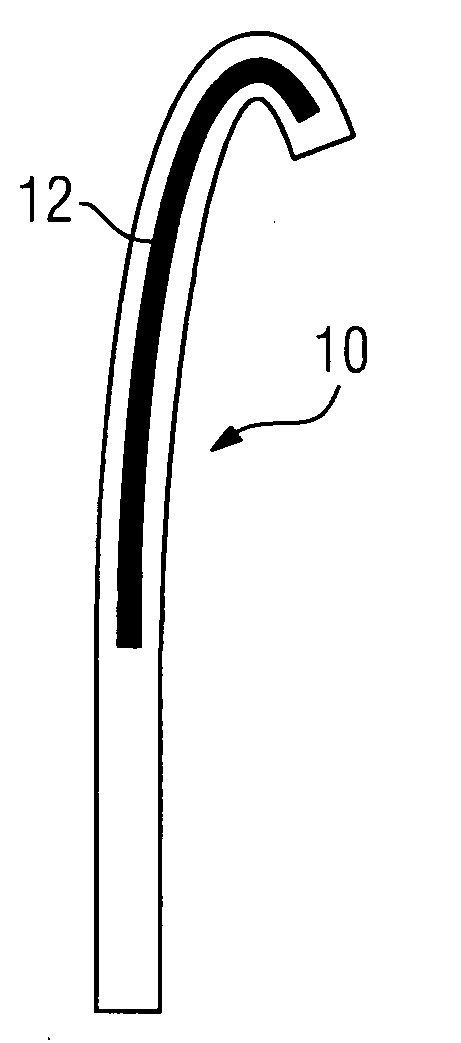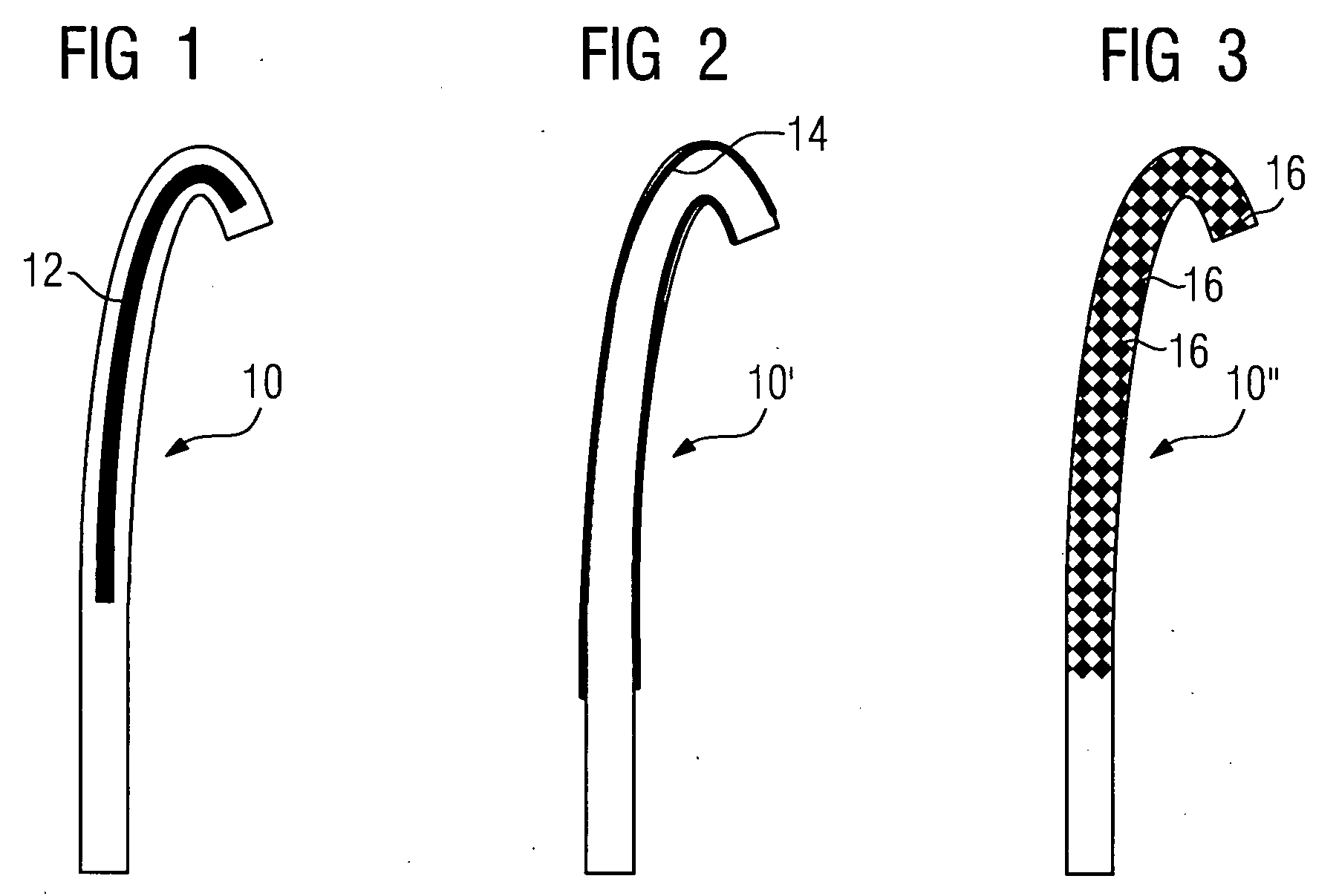Method for delivering a catheter to a target in the brain of a patient and guide wire for a microcatheter for insertion in the brain of a patient
a technology of brain and catheter, which is applied in the direction of catheter, guide wire, application, etc., can solve the problems that catheter applications in the heart are not used without restriction
- Summary
- Abstract
- Description
- Claims
- Application Information
AI Technical Summary
Benefits of technology
Problems solved by technology
Method used
Image
Examples
first embodiment
[0018]With a first embodiment illustrated in FIG. 1, provision is made for a guide wire made of plastic and denoted as a whole with 10, in the interior of which is located a single receiving pocket 12, which forms the core of the guide wire. Magnetic nanoparticles are arranged in the receiving pocket 12 and thus in the core of the guide wire 10. These can either be suspended in a fluid (as a ferrofluid) or they can be magnetic diamond nanoparticles, which have been introduced into the receiving pocket 12 in powder form. The pliability of the guide wire 10 is not significantly restricted either with the embodiment with the fluid or with the powder.
[0019]The guide wire 10 can be moved from the outside by means of magnetic fields, as is known for instance with guide wires for cardiac catheters in the prior art. For the basic design of a navigation system using external magnetic fields for the guide wire 10, the prior art can be adopted in its entirety. This also applies to the design o...
third embodiment
[0021]With a third embodiment, a guide wire 10″ is provided (FIG. 3), which comprises a large plurality of receiving pockets 16, in which the magnetic nanoparticles are arranged. The guide wire 10″ is then particularly formed to some degree like a sponge (in other words porously) in the region of its tip, being sealed from the outside.
PUM
 Login to View More
Login to View More Abstract
Description
Claims
Application Information
 Login to View More
Login to View More - R&D
- Intellectual Property
- Life Sciences
- Materials
- Tech Scout
- Unparalleled Data Quality
- Higher Quality Content
- 60% Fewer Hallucinations
Browse by: Latest US Patents, China's latest patents, Technical Efficacy Thesaurus, Application Domain, Technology Topic, Popular Technical Reports.
© 2025 PatSnap. All rights reserved.Legal|Privacy policy|Modern Slavery Act Transparency Statement|Sitemap|About US| Contact US: help@patsnap.com


